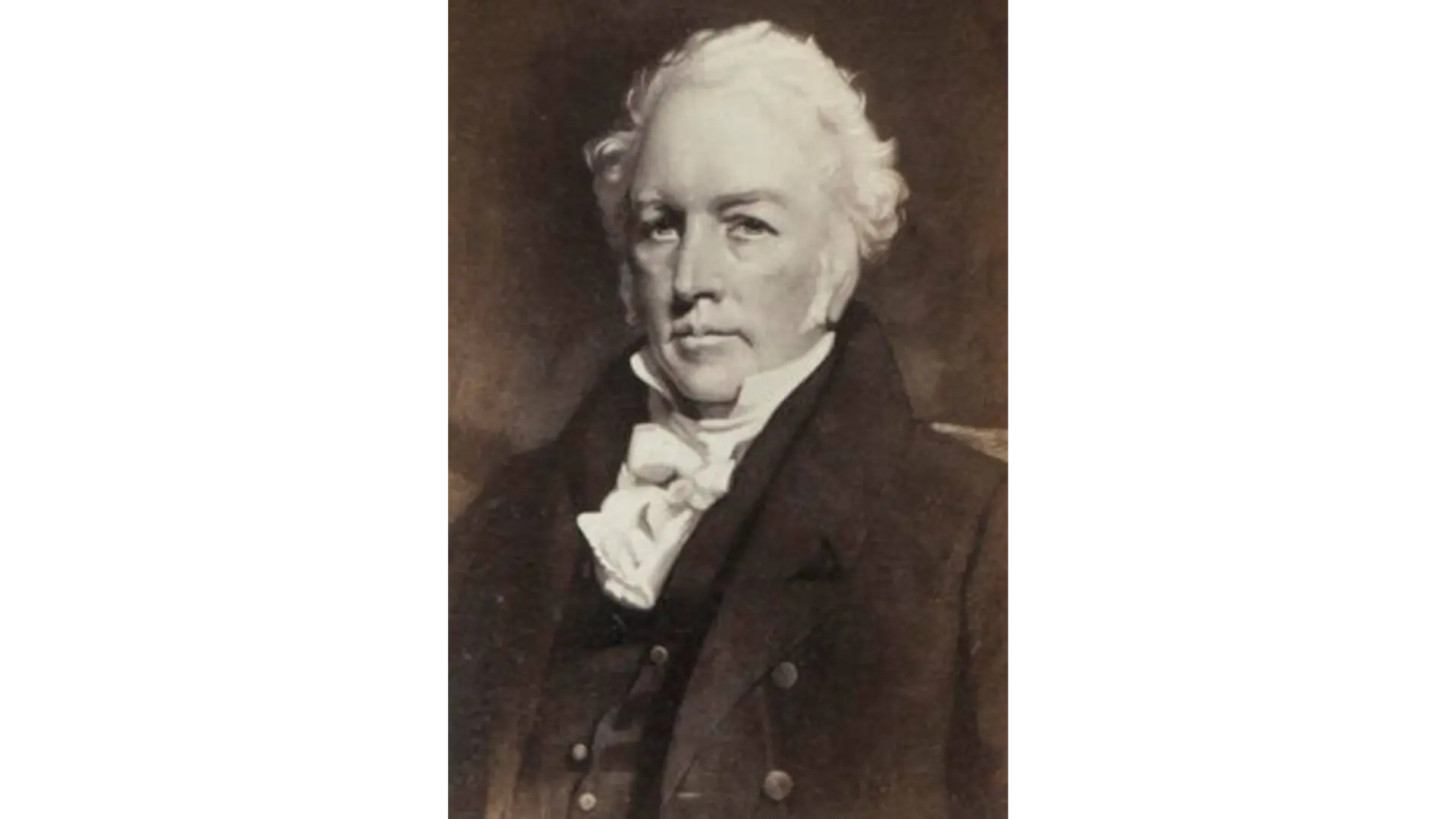Why Were Chainsaws Invented: From Medical History to Modern-Day Wood Cutting Tool 2024
Chainsaws are known as the effective tools everyone seems to know about. They are used for a diverse range of applications from wood cutting to polishing and furnishing. However, like many other tools, they have evolved through centuries into what they are today. This comes with many conspiracy theories and misinformation that people are puzzled by.

Similarly, with the new TikTok trends around chainsaws being brutal and scary, medical chainsaws for childbirth have also been circulating. These have been used for justifying misrepresented history and narratives. Hence, to fully educate you regarding these powerful tools and how they evolved over time, I have brought together this detailed guide on “why were chainsaws invented”, so dive right in for more.
Who Invented Medical Chainsaws and Why: All You Need to Know Regarding Chainsaw History
Medical chainsaws gained immense popularity during the 18th century, considering that it was the solution to painful maternal deaths and complicated surgical procedures. The invention of these tools was a blessing in the field of medicine as it was sharp and time-efficient to cut through the woman to deliver the baby. Although it seems perfectly safe and fine to deliver a baby in today’s age through caesarian sections, it was a matter of intense pain, infections, and long-term walking difficulty at that time.

Nowadays, people find it really scary to even think of using the modern-day chainsaw to cut through the women’s pelvic area, it certainly didn’t look like it. The first-ever device that was invented was nothing but a kitchen knife that was powered by a hand crank. This was incredibly easy to use by physicians and covered up the time that was being delayed during the C-sections. Henceforth, the following text addresses the entire medical chainsaw history and how it developed over time in the field of medicine.
What was the Purpose of Traditional Medical Chainsaws? How Did the First-Ever Device Used Look Like?
The invention of the traditional chainsaw can be traced back to the maternal deaths that were caused by childbirth, because of the challenges in the caesarian sections. Although now it has become absolutely safe and secure to deliver a child now, in the Roman era, the deaths and challenges in the C-sections were the biggest concern of physicians. Although there were rumors that C-sections were able to save both lives, it is largely being seen with skepticism as it was nearly impossible under complications.
Fun fact, the caesarian section was named after king Caesar as he was the one to write the law. This suggested that physicians are to open the dying mother in order to remove the baby from her, which was imminently the last thing they could do. However, here, nothing could work as neither the hands nor the scissors were sharp or fast enough to penetrate the human skin and save the baby’s life, given that there were also no medications (antibiotics/ anesthesia) that were to allow the mother to withstand the pain.

Therefore, this was the time traditional chainsaws came in place of C-sections. However, during this time, the surgeries remained a matter of intense pain and infections that were to follow the use of this tool on the private parts of women. The incident that triggered the invention of these tools goes back to Dr. John Richmond’s story. He was performing a C-section on a woman using scissors and given the mother was really bulky and fat, he was unable to get the baby out and the mother was in intense pain.
What followed this was the fact that he made a decision to save the mother and had to remove the baby piece by piece. Hence, the development of medical chainsaws was justified as a relatively more humane tool to be used to deliver the baby. Now, you must be wondering what the first-ever device that was designed for childbirth looked like. Well, here comes the two orthopedic surgeons who envisioned a blade that was sharp and fast enough to cut women’s limbs and bones to deliver the baby.
Well, speaking of the exact tool, it was primarily a knife blade that had small little teeth. It imitated an oval shape that was rotating in order to penetrate the skin and bones better. It had absolutely minimal similarity to the motorized version of chainsaws we use today. The gynecologists at that time were absolutely mesmerized by this invention, given that they were extremely easy and time-efficient for the procedure. However, soon enough, they were replaced by the Gigli wires as they were convenient and cheap.
What is Symphysiotomy? Did Chainsaws Replace C-Sections?
Well, to make it understandable to the layman, it can be said that it was a procedure done to a woman before she was impregnated, during, and even after, as a replacement for the C-section. The surgeons performed this procedure by using this tool to cut through the ligaments and pelvic joints, in cases of complications. Similarly, in extreme conditions, it was further used to cut through the bones of the pelvis, so it is easy to deliver the baby, with minimal complications, known as pubiotomy.
However, there lies an unfortunate truth with this type of procedure. The scariest part of the story is that it resulted in the fatal risk of bladder and renal injury, needless to say, potential infections in the area. In the longer term, it also caused immense pain and walking difficulty, making you paralyzed in extreme cases. Yet, it was a regular method used by surgeons for complicated cases during the 17th and 18th centuries, given that no sophisticated equipment was present at the time.

Finally, soon enough, during the late 20th century, symphysiotomy became less frequent, considering that the risk of maternal deaths was reduced to a certain extent. This was primarily because of the hygienic practices for the surgery as well as the advanced technology that was evolving back then. However, illegally, some women were still undergoing these procedures. It is reported that around 1500 women still underwent these surgeries in Ireland between 1944 and 1987.
Lastly, a victim group known as the Survivors of Symphysiotomy SoS was created by a survivor’s daughter Matilda Behan, as a step to advocate their goals and objectives against this procedure. These practices were largely common in countries where there were no operating rooms for the caesarian sections. However, this was the end of the grim history of chainsaws as after this, the evolution and development of these tools were useful in the wood-cutting industry to make the process efficient.
Who Invented the Medical Chainsaw and When?
Now, you must be wondering who could have thought of using these tools for childbirth procedures. To make it easy for you to understand, I would say the two orthopedic doctors John Aitken and James Jeffrey, 1780, came up with this tool in order to make it easier to remove the pelvic bones in cases of complications. This was primarily done to make childbirth time-efficient and easy for surgeons, not to mention, to prevent maternal deaths and chances of cesarean sections.

Here, James Jeffery was known for his contributions to anatomy and botany at the University of Glasgow for almost 58 years. He was given the title of the longest-ever Scottish professor. During this time, he came up with a series of projects on the excision of various joints, that were collected on the whole in 1806. This was also the reason why the invention of the chainsaw was justified. Once invented, his invented tool was used in a variety of surgeries until a new cheaper alternative twisted wire-saw was discovered.
Soon enough, this idea was further shared by a German Orthopedic doctor John Aitken, in the early 1830s. Speaking of the exact year when it was invented, it can be said that in 1883, a patent was proposed and signed for these tools for surgeries. Ever since, they have developed into something that is used diversely for chopping different things, wood being the main. In the end, it is undoubtedly a great invention of human history that has turned out to be evidence of technological advancement.
Usage in Prosthetics
During this time, in 1830, a Canadian professor of German descent Bernard Heine invented a transformed chainsaw design. This was also known as the Osteotome which was a surgical instrument used in prosthetics. This changed the entire perspective of medicine and brought about a transformation in amputations. He designed the first-ever device that was powered by a hand crank and was used in complicated prosthetics.
His chainsaws had a unique design with a small knife. Although this knife had the same cutting teeth, the edges of these teeth were taken slant to make sure the amputations remained easy and time-efficient. Following him, another pioneer from California, Muir came up with the first blade that was designed for logging. However, it was quite heavy and didn’t survive, largely because they were not profitable in the market, yet, he still made up some highlights in the news that gives him the due credit.
When Did They Stop Using Medical Chainsaws for Childbirth?
Considering that these power tools were used to reduce the risk of maternal deaths during the caesarian sections, they became less frequent once the surgeons were able to develop hygiene clinical practices. Hence, during the surgeries, intense pain and infections were reduced using opium and other related alternatives, yet hygienic practices were still too scary in the 18th and 19th centuries to use the caesarian section for childbirth. The tragic story of Dr. John Richmond triggered the use of these tools.

Therefore, although we cannot clearly define the time when they stopped being used, the 18th and early 19th century can best describe their use on patients. In modern times, the use of these tools is absolutely prohibited, yet some third-world countries and illegal places still use this procedure to date. In the end, although there is no doubt that the invention of medical chainsaws was clearly a blessing as there was nothing better at the time, using them in the current times is threatening for both lives.
WoodWork and Chainsaw History
Once their medical history was almost over, these tools were unstoppable and proved serviceable in another field, which was commercial forestry and wood cutting. Numerous people came to revolutionize the use of chainsaws and were quite successful. Therefore, here is a brief account of how the modern-day chainsaw evolved from the ancient Roman empire’s ax;
How the Axe Became the Saw?
Now as long as we know life, axes have been the tradition of ancient times. These tools came in different materials ever since human history, from steel to copper, bronze, and much more, for the purpose of cutting trees and branches. The first ever saw came into being around 5000 BC when a tribe from Germany came up with a knife that had small teeth. They were used to cut wood and soon evolved, where they would use different materials to make them, as per the availability of the specific tribe.

From that time up till the 16th century, there remained no historical record of hand saws being used. During the 16th century, saw trunks were the highlights as they were able to cut the wood into small planks. Another record of such tools was found in Leonardo Da Vinci’s paintings, who included a number of saws in his sketches. It all started in the 1800s in England when the first-ever saw with a circular orientation was introduced. This was the exact time when the ax was completely transformed into a saw.
Hence, in the ancient Roman empire, saws were the trend that was used ever since. However, in the European continent, they picked up the trend in the late 19th century as the flow of timber wood increased, which required something that could make it useful for day-to-day work, but couldn’t be used for a large bunch of lumberjack. Soon enough, drag saws were introduced which were primarily powered by steam engines. Yet, the big size and bulky structure of these tools appeared impractical.
Evolution of Chainsaws during the 20th Century
During the late 19th and early 20th century, chainsaws were becoming less and less frequently used for medical reasons. This paved the way for the researchers to dig deeper and redesign these tools to be used for better and more effective applications. Soon enough, they were able to find their use in the commercial forestry area. However, as it is understandable, it required something powerful and effective enough to cut through large wood pieces and fire timber, which paved the way for their redesigns.
Here, the person who was responsible for carving out the patent for the first commercial chainsaw was Samuel J. Bens. He partnered up with Hames Shand who lived in Canada and designed the first portable chainsaw in the year 1918. Although it was portable, it still remained heavier than many others and couldn’t be deployed easily. However, the proper introduction of these tools came soon after the 1920s, with three primary manufacturers, namely Stihl, West felt, and Wolf, all of which have evolved with time.

Similarly, chainsaws, when first introduced, were extremely heavy and bulky to be used for a diverse range of applications. In the early 20th century, manufacturers like Sthil, Wolf, and Dolmer came up with their own versions that make up the entire chainsaw history. For the most part, during the time after the 1950s, the weight of these tools fell massively (to 30 pounds). Hence, afterward, they were able to be handled by a single man for casual and basic cutting tasks, which paved the way for other related companies.
Ever since, manufacturers like Oregon, Sthil, Wolf, and Husqvarna came up with a number of evolved functions including anti-vibrations, speed adjustments, easy ignition, chain brakes, and much more. This made them not only easy, and functional but also time-efficient and safe for a diverse range of applications. Therefore, to help you better understand the chainsaw history and its highlights, here are some major incidents you can consider that are responsible to bring out this modern-day cutting tool;
- In 1926, Sthil was the first-ever manufacturer to produce electric chainsaws.
- Just after a year, Dolmar came up with their own petrol-powered chainsaw design in 1927.
- For casual and basic cutting jobs and making it easy for users, the first-ever portable, one-man chainsaw was developed in 1950.
- In 1964, the factor that is responsible for making them massively popular in the modern days was introduced. It was the anti-vibration function that made them stable and secure to be used for a diverse range of cutting applications.
- Following this, in 1972, the chain brake was first introduced, primarily responsible for keeping them consistent and adjusting the velocity.
- In 1982, Sthil was able to enhance the safety of these alternatives by introducing a quick-stop function. This allowed users to utilize an automatic chain brake in order to reduce the kickback effect and make sure they were safe enough to be used for large blocks of timber wood.
- In the year 1989, they came up with a catalyzer, which was then followed by the automatic start (ignition system), in 1991.
The First Petrol-Powered Chainsaw
The chainsaws that were used in the 19th century were all powered by hand or were manual. The first patent for a petrol chainsaw was called by Samuel J Bens, in 1905. After him, in 1927, a German company under Emil Lerp came up with their first-even petrol-powered chainsaw design. This was designed for mobility, yet was incredibly heavy. It was soon followed by companies like Sthil and Dolmar, venturing into relatively more portable alternatives.
Gas Chainsaws Development
The first-ever commercial project related to gas-powered chainsaws came from Sthil in the year 1926. They were the ones who patented the gas chainsaws and became the pioneers in this industry. Followed by them, Dolmar company was another that came up with the manufacturing of these tools and launched their version of the gas-powered tools in 1927. Similarly, followed by this, in 1929, the company launched another gas chainsaw that was to utilize the same power and energy as electricity would generate.
Hence, when they were really heavy and bulky and even for small-sized, casual wood-cutting projects, this version of the gas chainsaws came as a blessing. Soon enough, in the 1930s, they were considered best deployed for cutting projects and were further widely used in WW-II in order to meet commercial wood-related projects. As the design progressed, these gas chainsaws soon transformed to be light and sturdy enough to be positioned in workshops. Now, they are widely used for professional cutting projects.
The Introduction of Electric Chainsaws
Finally, the massively popular and most practical electric chainsaws were another highlight in chainsaw history. In 1926, a mechanical engineer of German descent Andreas Stihl came up with the first version of the electricity-powered chainsaw. This was known for being light and easy to handle by two people. Ever since the company has gained immense popularity for its technologically advanced and practical alternatives. Over time, they were also able to be used by one hand and weighed not more than 100 pounds.
Followed by this, another popular manufacturing company Husqvarna came up with its own electric chainsaw version in 1959. This was the time when they included a number of advanced functions, including the noise-reduction function, anti-vibration technology, and auto ignition setup. This was primarily the reason why their designs became incredibly popular across North America. This company was also the first to introduce Auto-tune and auto-start which made them easy to use.
Development of the Modern Chainsaw Design
Here is a record of famous chainsaw manufacturers that have been responsible for the evolution of these power tools;

One-Man Portable Chainsaw
In 1947, for the very first time, the introduction of the portable chainsaw was made by Joseph Buford Cox along with his wife Alice. It was a simple machine that weighed not more than 16 kg and had an adjustable carburetor. Still, it was manual and the person doing the work was required to perform each task, such as adding oil to the fuel system, adjusting the frequency, and much more. For the purpose of making the process somewhat convenient, he used a chipper-type chain for the saw.
Considering that he himself was a logger and spent most of his time in the forest and near trees, it is believed that the design was inspired by the C-shaped jaws of the timber beetle. Hence, despite the fact that timber was hard to work with, this design could easily eat through the hardness. This tool proved revolutionary in chainsaw history and came off as a time-efficient and effective alternative to cutting timber trees. The fun fact is that both the husband and wife worked together and started Oregon saw Chain Co.
Not much later, the company turned into another small company, named Omark industries. Just in one year in 1951, they were able to make up sales worth $1 million which proved to be the reason for their success. Following this, Blunt Inc, in 1952 acquired Omark Ind., which was later merged into another company. This merger happened in 1999 by the Lehman Brothers Banking Partners and came to be known as the Oregon System Division of Blunt Inc. this completely revolutionized the industry.
Atom Industries
While this was happening, in the background, another small company in 1949 by the name of Mcculloch Motors came up with the lightest chainsaw out there. It was known to weigh only 25 pounds which was the reason why it was famous by the name of model 3-25. This company further ventured into automating these power tools where they added a number of functions, including the turbo speed function, self-cleaning, self-lubrication, and even the electronic ignition, making them the best across the market.
In 1964, the company came up with the anti-vibration mechanism that proved to be the step that made wood cutting stress-free and safe for users. Here, cushions were attached to the handle that was directly working for the throttle, so any time the player was working on the tool, it provided them with enhanced grip and stability. This not only prevents potential accidents but also reduces the kickback effect to a great extent.
Husqvarna
In 1959 a Swedish company ventured into the industry of chainsaws with their automatic models. The chain used in these tools worked with an automatic lever that was not only convenient for operators to use but also reduced the kickback effect to a greater extent. Their massively popular model 375 XP came in 2000 and was recognized as the most powerful chainsaw you could find out there.
Some Statistics About Chainsaws in the Contemporary Times
In the end, based on the stats from the top four brands, the highest sale of gas and electric chainsaws was between 2015 and 2019. They have been the source of revenue generation for these four brands, including Sthil, Husqvarna, Blunt Int, and Bosch. As per the recent data from 2017 and 2021, the most sales came from the US and China. This is the primary reason why the companies have been distributing their models in these countries, Europe, and Japan in the current times.
Frequently Asked Questions
What did the first chainsaw look like?
In recorded history, the first chainsaw was designed for medical purposes and looked nothing like the modern-day motorized version of these tools. A basic tool at that time meant a kitchen knife that had a metal frame and cutting teeth which were primarily responsible for penetrating into human flesh. These tools were powered by a manual crank handle, making it easy for physicians to deliver a baby.
Who manufactured the first chainsaw for cutting trees?
Once medical chainsaws were not as frequent in the early 20th century, Samuel J Beans was the one who patented the first-ever chainsaw for cutting trees. In 1907, he came up with a design that was run on a steam engine and was too bulky to move around. After him, people like Andreas Stihl and James Shand were responsible for paving the way for gas and electric chainsaws.
Do they still use chainsaws for medical purposes?
No, as of the legal record, the medical chainsaws are not being used. However, some researchers show that they are still being used in third-world countries with poor sanitary conditions and unsanitary clinic practices, needless to say minimal pain relief medications. Yet, it cannot be said that they are frequently used, given that the challenges faced by physicians in C-sections have reduced considerably.
Why were chainsaws invented?
Well, the first-ever recorded chainsaw was invented for medical reasons. During ancient times, the risk of maternal death during childbirth was immense, which meant fatal challenges for cesarean sections. Hence, to prevent this, two doctors John Aitken and James Jeffrey came up with the idea of using chainsaws for delivering a baby. They were used to cut the pelvis bone of the woman, so the complications were handled effectively.
Final Thoughts
In the end, cutting tools have been here ever since human history, one of them being chainsaws have gained a large flow of misinformation about their evolution. They undoubtedly have a long centuries-old history that needs to be unraveled for good. From their use to facilitate childbirth to their ability to amputate patients and wood cutting, they have evolved immensely to what today is known as a motorized chainsaw.
Finally, I hope after reading this detailed guide on “why were chainsaws invented”, you would be able to differentiate between the right and wrong information that has been circulating the internet.






